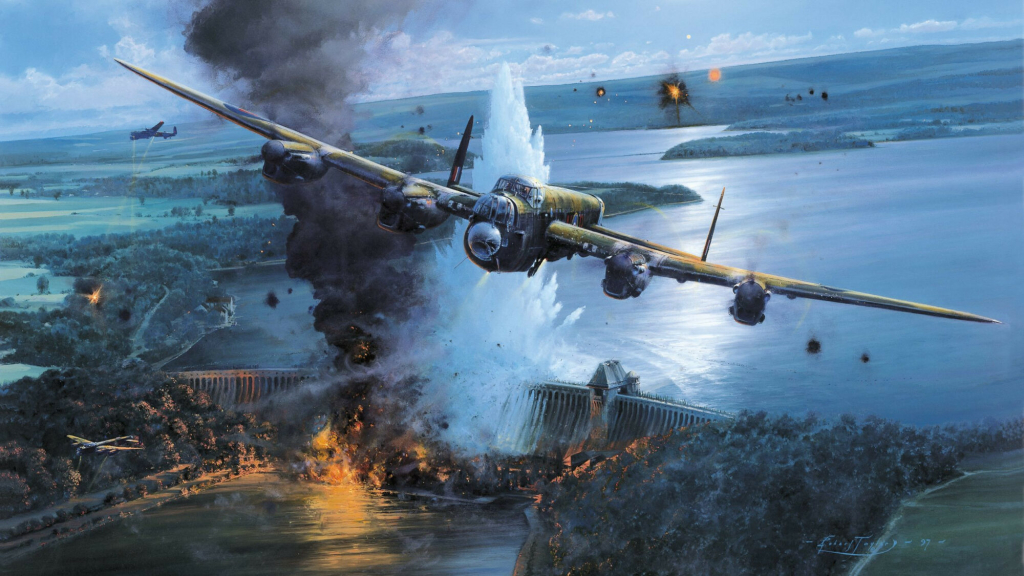


Today in 1943, an audacious RAF bombing raid into the industrial heartland of Germany wrecked three dams serving the Ruhr valley. The attack disrupted water and electricity supplies in a key area for the manufacture of Germany's war munitions. The crews were specially selected for the job and had been training in absolute secrecy. The bombs themselves were invented specifically for the task by the aircraft engineer Dr Barnes Wallis, the designer of the Wellington bomber. They were barrel-shaped, and used the principle of a "ducks and drakes" stone bouncing on the water to bypass the defences around the dams. The Lancaster bombers flown by 617 Squadron were extensively modified and the crews trained to fly at less than 100ft above the water, the height required to drop the bombs successfully.
The mission was under the command of Wing Commander Guy Gibson and the targets were three huge water barrage dams - two on the rivers Möhne and Sorpe, and a third on the River Eder. The Möhne and Sorpe dams controlled about 70% of the water supplied to the Ruhr basin and were built to prevent water shortages during the summer. Wing Commander Gibson led the attack on the Möhne dam personally. The Eder dam - the largest in Europe - was also breached in two places. Reconnaissance flights showed flood waters sweeping through the Ruhr valley, damaging factories, houses and power stations. The power station at the Möhne dam was swept away, rivers were in full flood and railway and road bridges disappeared. The mission became popularly known as the Dambusters raid, and was immortalised in a 1954 war film. It was one of the most famous air operations of World War II.
Casualties for the raid were high. Eight of the original 19 Lancaster bombers were damaged or shot down, and of the 133 aircrew, 53 were killed and three captured. On the ground, too, almost 1,300 people were killed, including 749 Ukrainian prisoners of war based in a camp just below the Eder dam. The Möhne and Eder reservoirs poured about 330 million tons of water into the western Ruhr valley. The flood waters spread for about 50 miles (80km) from the source. The spectacular, daring nature of the raid was a significant boost to British morale. But militarily, it was a failure. The squadron failed to breach the Sorpe dam; and the disruption to the German war production was minimal. Water supply in the Ruhr valley was back to original levels six weeks later. The aircrew, however, became famous as war heroes, and the leader of the raid, Wing Commander Guy Gibson, was awarded the Victoria Cross. He died less than 18 months later, shot down at the age of 26 in September 1944.
We were delighted to welcome Dawn Dungate to our meeting and we look forward to seeing her at future meetings.
We enjoyed a lively and wide-ranging discussion stemming from our theme of communicating. Full details are in our top tip.